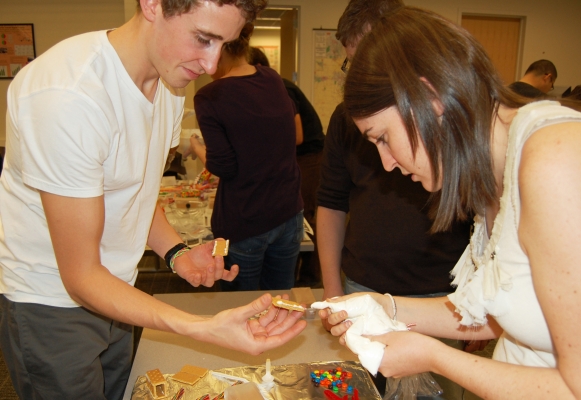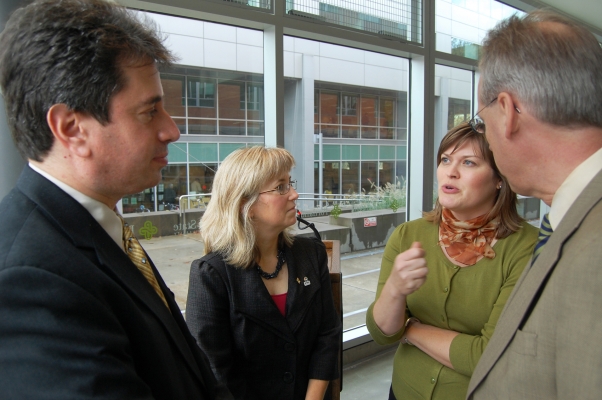Even residents of a gingerbread candyland can't get around with holiday magic alone. After all, Santa's elves still need a reliable way to get from their cozy homes to the workshop.
Sadly, transportation planners have turned a frosty shoulder to sugar-based transit systems. Until now.
On Dec. 3, Portland State University's Students in Transportation Engineering and Planning held the first gingerbread transit station competition. Four teams of students pulled their attention away from human transit to focus on the needs of gingerbread people and misfit toys.
Dealing with building materials of unknown structural properties, students field engineered solutions. Licorice sticks stood in for steel rails, candy canes for bicycle racks. For a binding agent, students mixed cream of tartar and egg whites instead of portland cement.
The resulting transit system has already resulted in fewer traffic gum-ups and a drastic reduction in ultrafine powdered-sugar emissions. Sleigh-travel-time reliability has also improved.
Researchers are now assessing the durability of corn-syrup-reinforced composites in candy bridges, the potential for alkali-silica reaction in gingerbread pavement and the possibility that someone hungry will stumble in and eat the infrastructure.
The winning design team was Transit Wonderland, composed of Jesse Boudart, Sara Morrissey, Mark Haines and Meeyonwoo Lim.



